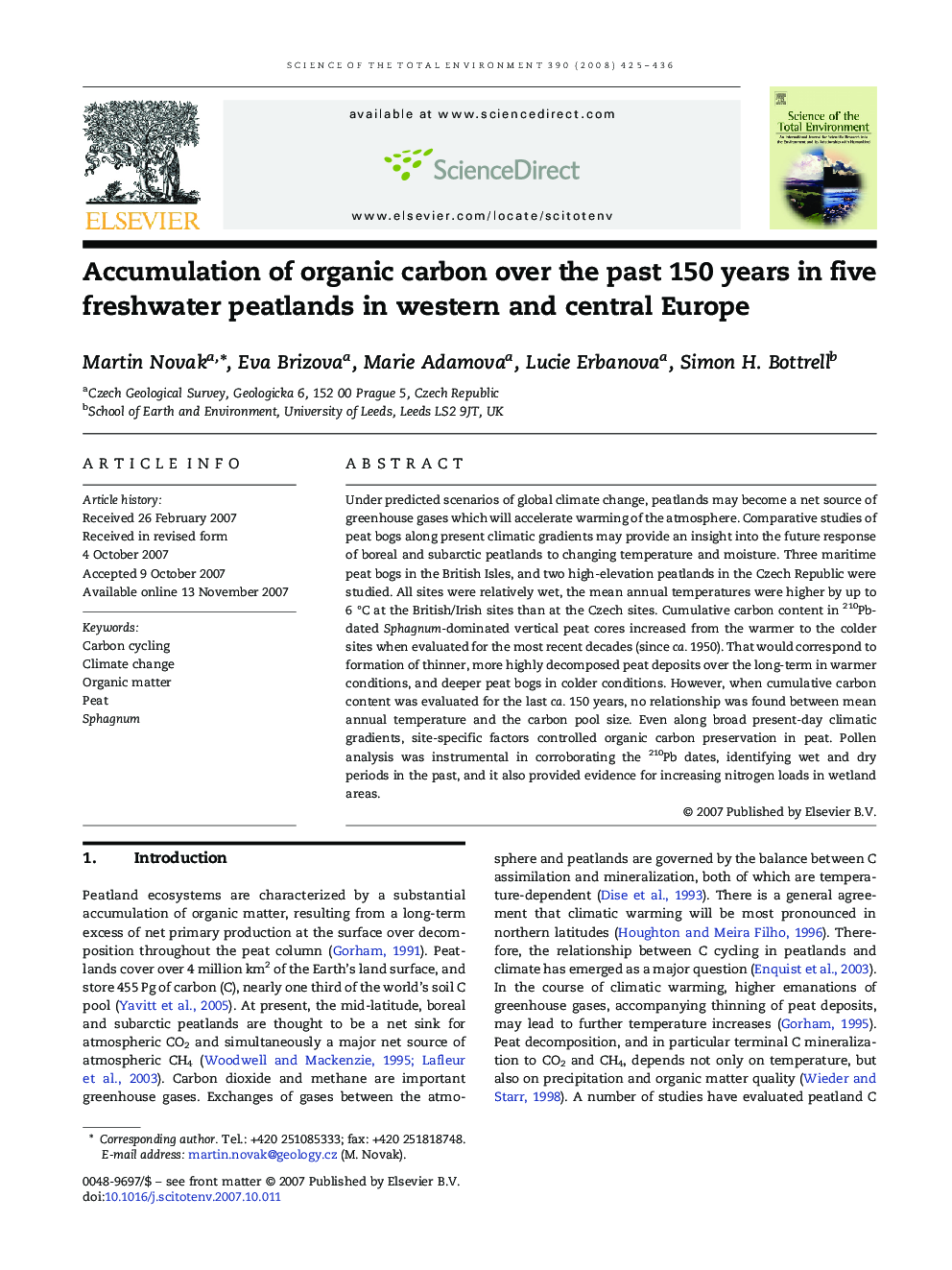| Article ID | Journal | Published Year | Pages | File Type |
|---|---|---|---|---|
| 4432386 | Science of The Total Environment | 2008 | 12 Pages |
Under predicted scenarios of global climate change, peatlands may become a net source of greenhouse gases which will accelerate warming of the atmosphere. Comparative studies of peat bogs along present climatic gradients may provide an insight into the future response of boreal and subarctic peatlands to changing temperature and moisture. Three maritime peat bogs in the British Isles, and two high-elevation peatlands in the Czech Republic were studied. All sites were relatively wet, the mean annual temperatures were higher by up to 6 °C at the British/Irish sites than at the Czech sites. Cumulative carbon content in 210Pb-dated Sphagnum-dominated vertical peat cores increased from the warmer to the colder sites when evaluated for the most recent decades (since ca. 1950). That would correspond to formation of thinner, more highly decomposed peat deposits over the long-term in warmer conditions, and deeper peat bogs in colder conditions. However, when cumulative carbon content was evaluated for the last ca. 150 years, no relationship was found between mean annual temperature and the carbon pool size. Even along broad present-day climatic gradients, site-specific factors controlled organic carbon preservation in peat. Pollen analysis was instrumental in corroborating the 210Pb dates, identifying wet and dry periods in the past, and it also provided evidence for increasing nitrogen loads in wetland areas.
